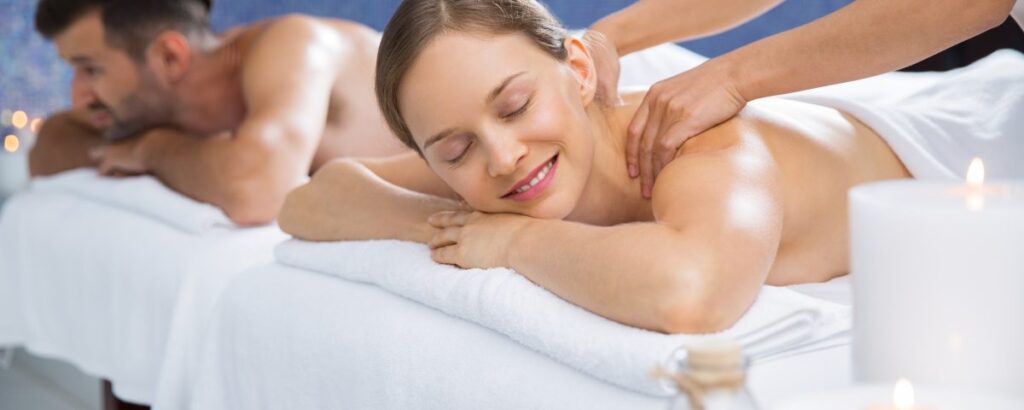Massages in Malaysia: A Blend of Tradition and Modern Healing
Health/FitnessMalaysia has been renowned for its rich cultural heritage, and this diversity extends into its wellness and massage sector. Malaysia has a vast variety of massage methods influenced by Malay, Chinese, and Indian practices, as well as contemporary spa treatments that appeal to tourists and locals alike. Whether seeking relaxation, relief of muscle tension or holistic health, Malaysia provides a massage experience that integrates traditional traditions with the latest wellness practices. The booming wellness industry has made massages easier to access, with establishments ranging from high-end luxury spas as well as small, traditional massage establishments. Massages at Malaysia provide more than just physical relaxation but also a deep sense of rejuvenation because of the special methods and the natural solutions used in many treatments. Since Malaysia is continuing to establish its self as a destination for wellness the massage industry in Malaysia is a key factor in promoting overall well-being.
Traditional Malay massages, commonly referred to as “urut,” is one of the most sought-after and extensively practiced types of massage that is practiced throughout Malaysia. Based on centuries-old practices of healing, this technique uses deep and rhythmic movements paired with essential oils with herbal extracts to increase the circulation of blood, ease muscular tension and facilitate general relaxation. Malay massages are often associated with postnatal care in which new mothers go through an array of treatments to aid recovery and bring back energy. Utilizing herbal remedies like ginger, lemongrass, and betel leaves can enhance the therapeutic effects of massage by providing warming to muscles and aiding in detoxification. Massage therapists from all over the country are trained through generations of wisdom passed down from families, which ensures authenticity of their practices. As a result, Urut is a desired therapy for people who appreciate traditional healing methods.
Chinese massage methods are well-established in Malaysia’s wellness landscape, thanks to the nation’s substantial Chinese populace of. Tui Na is a type which is a deep-tissue massage, which focuses on acupressure points, is often employed to relieve chronic pain and bring balance back to energy levels in the body. Reflexology, another widely practiced technique, is based on the premise that certain pressure points on the feet correspond to different organs and systems within the body. Reflexology clinics are found all over Malaysia, from bustling retail stores to tranquil neighborhood health centers, which makes it an accessible and affordable choice for a variety of people. A lot of people choose Chinese massage treatments not just for relaxation but for their proven benefits of improving circulation, reducing stress, and increasing overall well-being. The growing awareness of traditional Chinese therapy (TCM) is also contributing to the growing popularity of these techniques for massage in Malaysia.

Indian Ayurvedic massage is also establishing its presence in Malaysia especially among people who seek holistic health and balance. It is based on the fundamentals of Ayurveda the ancient Indian medical system, Ayurvedic massages use warm natural oils as well as specific strokes that cleanse the body and improve circulation. Therapies like Abhyanga, a full-body massage using oil, as well as Shirodhara in which hot oil is poured on the forehead to promote mental clarity are typically provided at Ayurvedic wellness centers. Numerous people opt for Ayurvedic b2b klang massages in order to reduce stress, ease joint pain and improve general well-being. Being part of an Indian community in Malaysia has helped preserve the practice and make it more popular and has made them accessible at specific Ayurvedic clinics in addition to mainstream wellness establishments. The holistic method to Ayurveda remains popular with those who prefer natural, long-term healing solutions in place of traditional medicine.
As well as these old-fashioned techniques, modern spas in Malaysia have embraced the international styles of massage, providing an amalgamation of Western and Asian techniques. The most luxurious resorts, luxury hotels and urban wellness centers provide a variety of massage treatments, including Swedish massages and aromatherapy, and deep tissue therapies. Some of them incorporate the latest wellness technology like hydrotherapy, hot stone therapy and sound healing to enhance relaxation and rejuvenation. Modern spas are focused on offering an all-sensory experience, with carefully designed ambiance, soothing music, and top-quality oils that help to deep relaxation. Combining traditional and modern massage techniques gives visitors the very best of both, catering to different preferences and wellness goals. While wellness tourism continues to grow, the spa industry in Malaysia continues to be a popular destination to international tourists looking for the ultimate luxury and rejuvenation escape.
The future of massage therapy in Malaysia looks promising, with growing demand for conventional and modern wellness practices. People are becoming aware of that massage therapy is not as just a leisure practice but also as an essential for maintaining general health and wellbeing. The growing integration of massage therapy into medical and rehabilitative treatments also points out its importance over relaxation. Physiotherapists and chiropractors incorporating massage into their treatment plans. Furthermore, the growing popularity of wellness tourism in Malaysia will likely lead to forward the development of massage therapy and new techniques for massage and holistic healing methods that are being developed. For stress relief, physical recovery, or pure relaxation, massages can be enjoyed in Malaysia provide an unbeatable blend of culture heritage and modern wellness, making them an essential element of the nation’s lively wellness and health scene.
